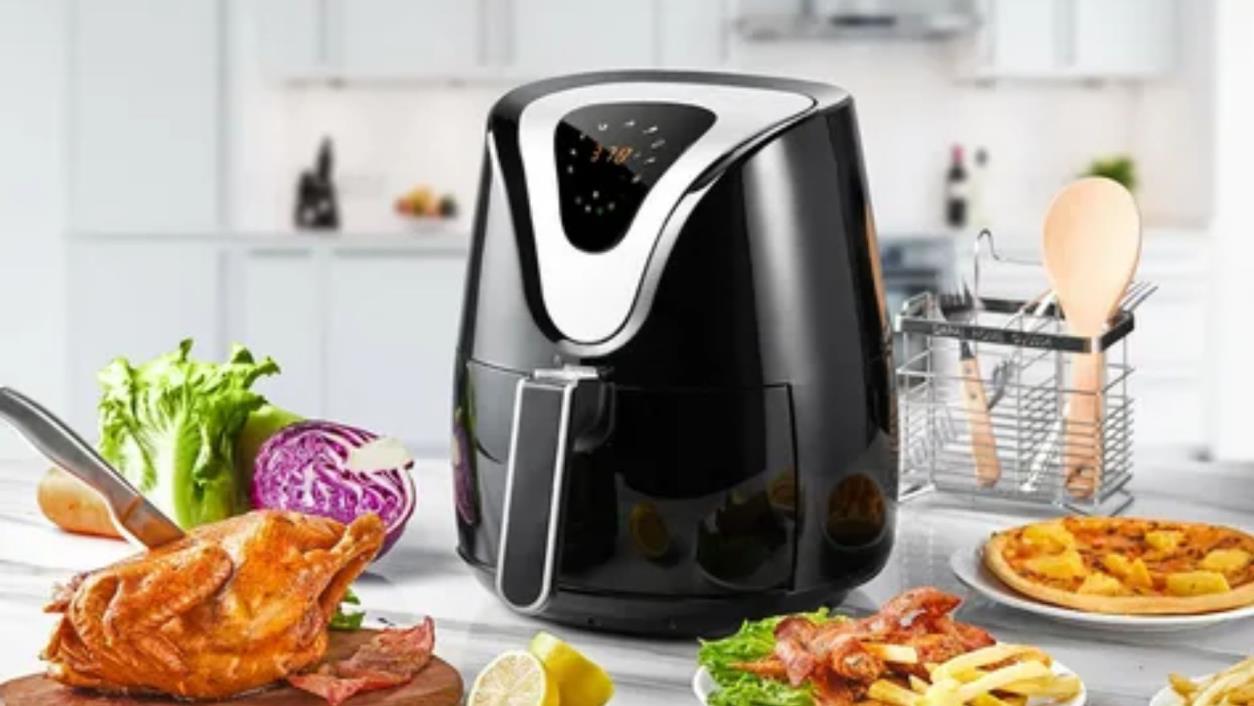The global kitchen appliance market is undergoing a rapid transformation, led by the surge in demand forsmart air fryers. These advanced appliances are revolutionizingthe way people cook at home, combininghealth-conscious features with cutting-edge technology to deliverefficient, oil-free cookingsolutions.
��������������������������������:https://www.persistencemarketresearch.com/market-research/air-fryermarket.asp

Accordingto industry analysis, the globalairfryermarketis projected to grow at a CAGRof 7.6 percentbetween 2024 and 2031. The market, valued atUSD 932 million in 2024, is expected to reach USD 1.5 billion by the end of 2031. A significantshare of this growth is beingdriven by the smart air fryersegment, which is quickly becomingapreferred kitchen appliance across residential and commercial spaces.
Market Overview
Smart air fryers use rapid air circulation to cook food with little to no oil, producingthe same crispy texture as deep-fryingbutwith farfewercalories. Whatsets smartair fryers apart is theirdigital innovation many models now offertouchscreen interfaces, pre-programmed cookingmodes, and smartphone app integration.
These smartfeatures notonly enhance userexperience butalso align with the modern consumer’s desire forconnected, time-savingkitchen solutions. The ability to control the appliance remotely, receive real-timecookingupdates, and access a library of curated recipes through an app has elevated airfryers to a new level of convenience.
Key Drivers of Market Growth
RisingHealth Consciousness
One of the main drivers behind the increasingadoption of airfryers is the shifttoward healthier eating. Consumers are becomingmore aware of the health risks associated with traditional frying methods and are lookingforways to reduce oil intake withoutcompromisingon flavor. Smartair
fryers enable low-fatcookingwhilemaintainingtexture and taste, makingthem a popular choice for individuals and families alike.
Digital Innovation and SmartFeatures
The integration of smarttechnology has become akey differentiatorin the market. Smartairfryers can be programmed viamobile apps, voice assistants like AlexaorGoogle Assistant, and allow users to monitorand control cookingfrom anywhere. Features such as automaticshut-off, adjustable temperature control, and recipe suggestions enhance the overall experience, makingthem highly attractive to tech-savvy consumers.
GrowingPreference forVersatile Appliances
Smart air fryers are increasingly multifunctional, capable of baking, roasting, grilling, dehydrating, and even toasting. This versatility reduces the need formultiple appliances in the kitchen, especially in space-constrained urban homes. Consumers are investingin smartairfryers not only forfryingbut for an all-in-one cookingsolution.
Barriers to Market Expansion
Price Sensitivity
Despite growingpopularity, the relatively highercostof smart air fryers remains adeterrentfor some consumers. Advanced models equipped with Wi-Fi and smartsensors are priced higherthan traditional manual or digital fryers, makingaffordability achallenge in developingmarkets. Manufacturers need to address this by offeringflexible pricingstrategies and entry-level smart models.
Limited Awareness and LearningCurve
Anotherchallenge is the lack of consumer awareness and the learningcurve associated with using smart appliances. Many potential buyers are unaware of the benefits and features offered by smart air fryers or may find them intimidatingto use. Educational marketing, live demos, and customer supportwill be crucial in bridgingthis gap.
Future Market Opportunities
Expansion into EmergingMarkets
As awareness grows and prices become more competitive, thereis significantopportunity forsmart air fryerbrands to expand into emergingmarkets across Asia, Latin America, and Africa. These regions representuntapped potential due to risingdisposableincome,increasinghealth awareness, and a growingappetite forsmarthome appliances.
Collaborations and StrategicPartnerships
Collaborations between appliancebrands and tech companies are openingdoors fornextgeneration smartairfryers. Integration with smarthome ecosystems, recipe platforms, and wellness apps can furtherenhance productvalue and consumerloyalty. Partnerships with chefs and influencers are also helpingbrands showcase the versatility and usability of these products.
Sustainability and Eco-Friendly Innovations
Sustainability is becomingakey purchasingfactorfor modern consumers. Manufacturers are now focusingon developingenergy-efficientairfryers usingeco-friendly materials. Smartairfryers that
reduce cookingtime and energy consumption will appeal to environmentally conscious buyers and strengthen brand reputation.
Regional Insights
North America
North Americaremains the largestmarketforsmart airfryers, driven by high health awareness and early adoption of smarthome technologies. U.S. consumers, in particular, valueconvenience, multifunctionality, and tech integration in theirkitchen appliances. The availability of a wide product range across both retail and online platforms is helpingmaintain this momentum.
Europe
In Europe, the trend toward healthy cookingis supported by consumerpreference forlow-fatmeals and culinary experimentation. Countries such as Germany, the United Kingdom, and France are seeingincreasingadoption of smartairfryers, particularly compactmodels suited forsmallerkitchen spaces. Digital marketingcampaigns and influencerpartnerships are contributingto consumer interest.
East Asia
The East Asian marketis expandingrapidly due to risingurbanization and demand forcompact, techenabled kitchen gadgets. Countries like China, South Korea, and Japan are adoptingsmart air fryers as part of broadersmart home ecosystems. Brands offeringlocalized features, user-friendly interfaces, and recipe customization are findingsuccess in this region.
SegmentationInsights
By ProductType
Smart air fryers fall underthe broadercategory of digital airfryers, which are outpacingmanual versions in terms of sales growth. Consumers are favoringdigital models with smartfunctionalities overbasicmechanical dials due to theirenhanced precision, efficiency, and userexperience.
By End User
The residential segmentdominates the market, fueled by the growingdemand forhealthy cooking at home. However, commercial establishments such as cafes, cloud kitchens, and small restaurants are also beginningto incorporate smartairfryers into theiroperations to meetcustomerdemand for oil-freemenu options.
By Distribution Channel
Online retail continues to be akey distribution channelforsmartair fryers, offeringconsumers the ability to research, compare, and purchase models from the comfortof theirhomes. Brick-andmortar retailers, however, remain relevantforbuyers who preferin-person demonstrations before makinga purchase decision.
Competitive Landscape
Leadingplayers in the smartair fryersegmentinclude BrevilleGroup Ltd, BLACK+DECKERInc., GoWISE USA, Koninklijke Philips N.V., ConairCorporation, Groupe SEB, NuWave LLC, and Newell Brands. These companies are focused on enhancingconnectivity, expandingproductportfolios, and targeting digital-savvy consumers.
Innovation remains at the core of competition. Features such as app-controlled timers, recipe syncing, voice activation, and multi-compartmentcookingare helpingbrands stay ahead in a crowded marketplace. Userexperience, after-sales service, and brand reputation are becoming crucial competitive differentiators.
RecentIndustry Developments
Integration of voice assistants and smarthubs with airfryers for hands-free operation.
Launch of models with real-time cookingupdates and automaticrecipe adjustments based on food weight.
Partnerships with recipeplatforms to providein-app cookinginstructions and nutritional guidance.
